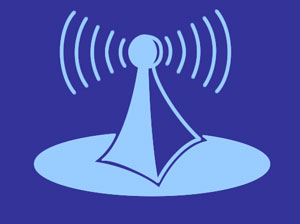
Wireless networks come with plenty of advantages; however they may turn into a privacy nightmare if not properly configured.
These days, you can easily get wireless internet signals in your vicinity, or particularly on main roads. Usually, these wireless networks are left with open access while anyone can use them (and all their resources, including but not limited to: printer, internet, etc) even without permission.
This may go horrible, if intruder starts accessing your private folder/files that are intended to be shared with another computer at home/office. Even worst, this may bring you legal consequences if intruder uses your network (your IPs) for illegal means.
Most common misuse of wireless networks is war chalking (to steal bandwidth from vulnerable wireless networks).
Improper Configuration: Usually, it is observed that wireless routers are never configured. They are just bought and put live in a network, just like any other plug and play device.
It should be kept in mind that due to wireless in nature, your network is not secure as it was in case of wired network. Hence, wireless routers are supposed to be configured at first use, unlike network hubs and switches.
No Firewall Protection: For first line of defense with limited protection, most of the Wireless routers come with built-in firewalls. However, it is observed that firewall configuration on wireless routers is ignored. It must be enabled to put fence between public internet and your private computer machine.
WEP (Wired Equivalent Privacy) or commonly referred as Wireless Encryption Protocol: For newbies, WEP is the password to lock or otherwise unlock your home/office wireless network by authorized users only.
You can enable WEP and firewall by accessing the admin panel of your wireless router. Please check your device manual or manufacturer to find out url address of admin panel.
Usually, if connected, you can access admin panel by entering this id in any web browser: http://192.168.0.1 or http://192.168.1.1 – here you will be asked for username/password, which is usually admin/admin.
You must change this password as well, enable firewall and apply WEP.
Advanced Security Setup
It must be noted here that WEP is crack able. Experts prefer to use WPA instead of WEP because of its vulnerability.
WPA came into existence after weaknesses were found in WEP. For elementary understanding, it is enhanced and much improved form of WEP. It basically safeguards the integrity of message by encrypting it.
WPA-PSK is the mode used for home users for providing strong encryption and is capable of changing encryption keys automatically after precise number of packets transmitted.
It encrypts network using 256 bit key. However, weak pass phrase are still vulnerable to hackers and other flaws like QOS have been discovered and can be overcome by applying some treatment to wireless settings.
Other Random Tips:
Final Thought:
It never ends here; wireless networks are still vulnerable but by using up-mentioned methods will at least minimize any vulnerability within your network. If your broadband provider has setup your home wireless network, ask them to keep these aspects in practice while setting it up.
Disclaimer: Please be informed that, Author is not responsible for any tips/purchase / sale /exchange/loss/Price Quotation/ decision made or you may brick your device; after reading this article.